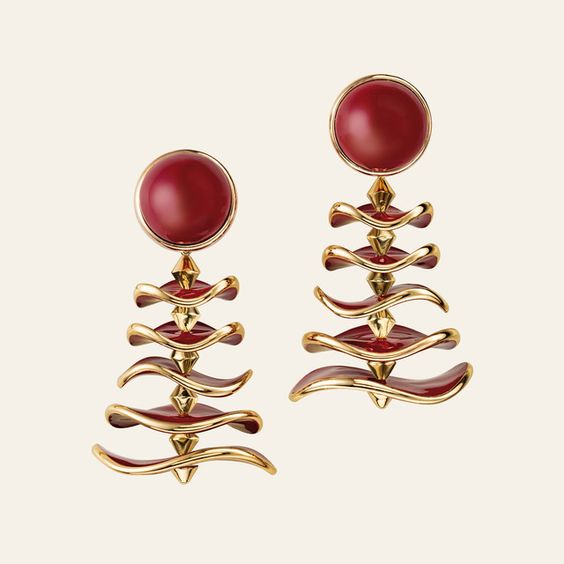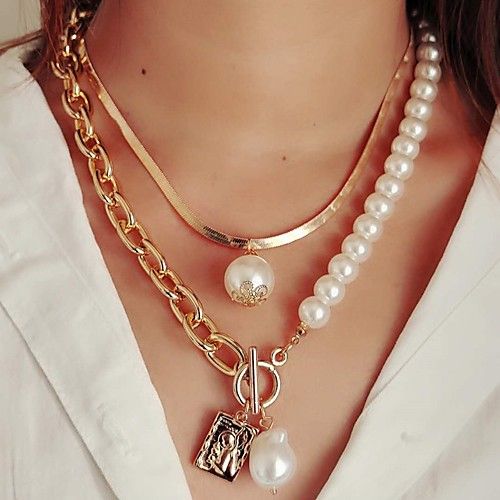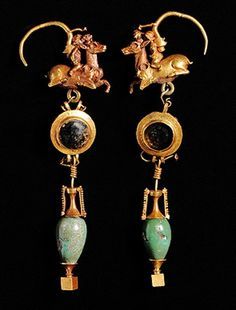Sisijoke.com – Jewellery includes ornamental items worn mainly for personal adornment, including rings, bracelets, necklaces, brooches, cufflinks, and other pendants. Jewellery can be attached to either the human body or the clothing. In a western context, the word is generally limited to hand-crafted ornaments, including flowers like orchids. In eastern cultures, jewellery has become almost a synonym for wealth, while in the middle-eastern cultures jewellery is associated with prosperity, good fortune, family heritage, or status.
Intricate and Complex Design of 21st Century Jewelry
During the early 21st century, there was a resurgence in the production of jewellery in Great Britain. The styles were akin to those of the Victorian era. They featured intricate and complex designs made from precious metals and sometimes adorned with gemstones.
The most popular jewellery items during the early period in history were diamond necklaces. Diamonds continued to be a highly prized possession among the upper class. The spelling of the word “diamond” remained as “diamonds” throughout the history of jewellery making. However, the spelling “diamonds” gradually changed to “jewellery”, and eventually to “jewellery”. In the latter spelling, diamonds are now almost entirely replaced by other stones such as cubic zirconium, titanium, or stainless steel.

Early jewellery often incorporated semi-precious stones such as aquamarine, jade, garnet, lapis lazuli, turquoise, green garnets, garnet, opal, amethyst, tourmaline, and pink sapphires. These were often worn as amulets worn in the shoulder, or around the neck. Other gemstones were worn as earrings. Often, one would find rarer gems worn on the wrist or ankle. This includes the evergreen mahogany, mother of pearl, blue Topaz, garnet, peridot, amethyst, garnet, and citrine.
The Beginning of the General Characteristics of Modern Jewelry
During the period saw the birth of modern jewellery. This was largely influenced by the European conquest of ancient cultures, including India, Malaysia, Africa, and the Middle East. By the nineteenth century, various new metals, including aluminium, tin, steel, and gold, had been introduced to western jewellery making. Many of these new materials were used to incorporate the colours and shades seen in the gemstones of ancient times. For instance, the British, Dutch, and German industries all began to produce jewellery using gold and silver which is now a common feature in modern jewellery.
Throughout the twentieth century, jewellery from other parts of the world began to appear in countries that had previously only produced jewellery from their own countries. Examples of this were the British made bracelets which were worn by both men and women. Examples include the Russian pendant which is encrusted with rubies. The Chinese also have a tradition of wearing an item of jade jewellery which represents them as a proud nation.

In contemporary times, the making of jewellery has become increasingly complex. Modern jewellery can incorporate precious and semi-precious beads as well as metal, stone, glass, quartz, and even wood. Some of the most popular types of jewellery that are often purchased for gift giving include charm jewellery. Charm jewellery often consists of unusual items like pearls, diamonds, or beaded necklaces. Sometimes, American English jewellery incorporates more decorative styles like Native American jewellery, which uses designs such as plaids, geometric patterns, or even Indian pottery.
Ancient Jewellery Art Tradition Hereditary
The ancient art of jewellery is still being practised today. Many of the ancient jewellery designs are still being passed down from one generation to another. Some of the most famous jewels from around the world include those that contain precious gems such as diamonds. They are often worn by people who wish to project a certain social or business status.
Another type of jewellery from the Indus Valley period saw the development of jewellery using precious metals such as gold and silver. During this time, the artisans who were creating jewellery could afford to use many different gemstones. One of the most common gems used during this time was the semiprecious gemstone known as the jasper. Other precious stones included onyx, opal, beryl, coral, and aquamarine. Over a period of time, this new class of gems began to gain popularity among the upper class in India.

Throughout the course of history, different jewellery designs progressed from primitive tools and techniques. In modern times, innovative jewellery designers have developed new techniques that allow for the use of numerous precious stones in a variety of colours. Some examples of these advances include the use of coloured plastics as well as metal alloys to create intricate jewellery designs. The preferred spelling of Indian English jewellery in today’s American English language is “jewellery”, whereas the spelling used in India, Canada and other parts of Asia is more similar to “jewellery”.

